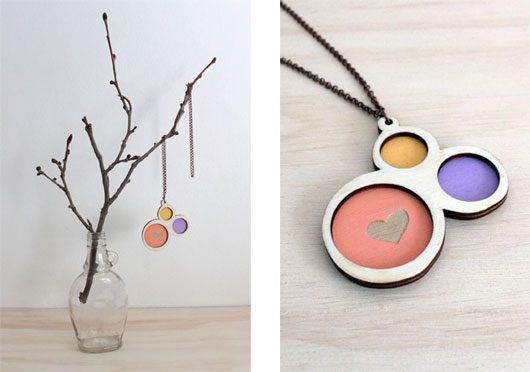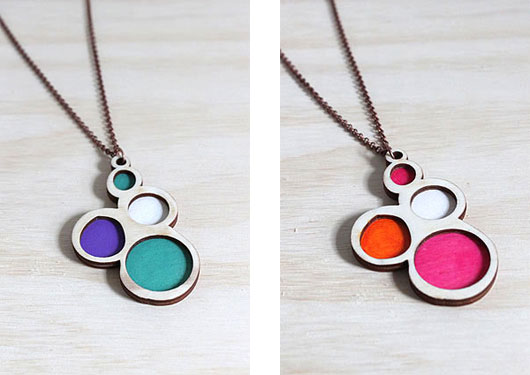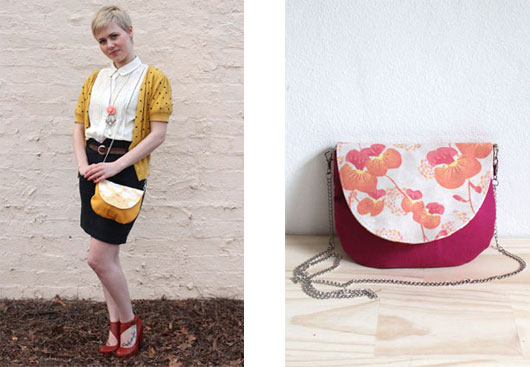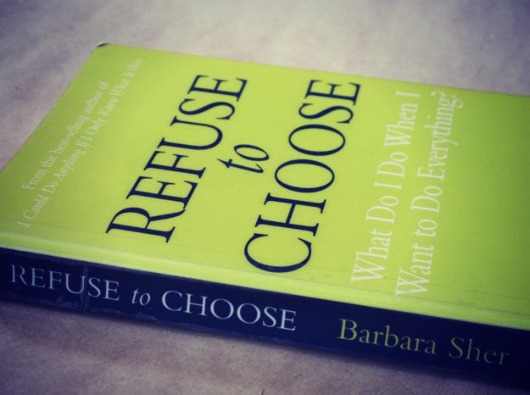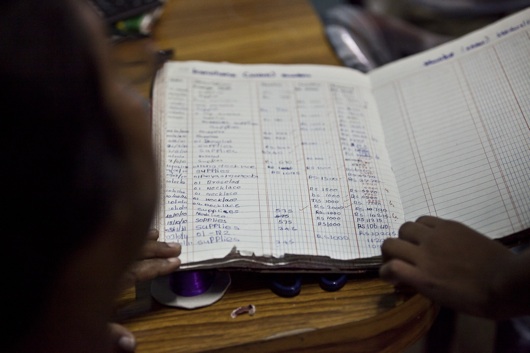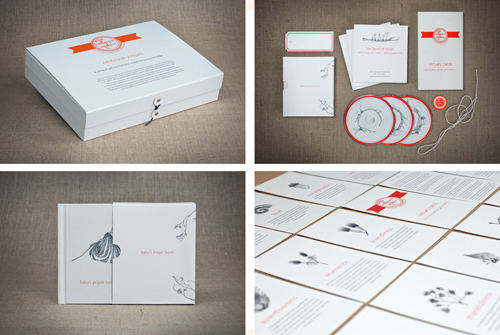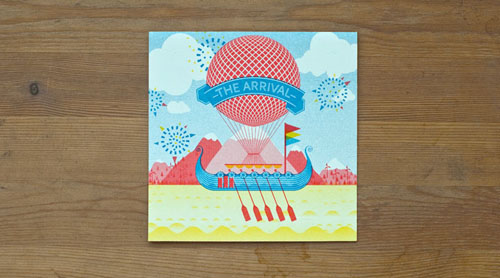Women Who Write - Michelle de Kretser
By Sandra Todorov Michelle de Kretser is back with her new novel Questions of Travel. The beauty and tragedy of life is explored through the eyes of two women: Ravi, a Sri Lankan born IT specialist and aura, a middle class Australian travel writer.
De Kretser (herself Sri Lankan born) explores the idea of what travel means to society, criticising some of the commercial aspects of it. I asked Michelle about her writing life and her start in the industry.
How many words do you write per day? Do you listen to the radio or music while you do it?
When I’m writing the first draft of a novel I write a minimum of 500 words a day. That handy little word count function on my word-processor gets a lot of use. `Still 417 to go….’.
I sometimes listen to classical music while working. Anything with words interferes with writing.
Describe your workspace.
I work at home, in a room that has a lovely Federation-era moulded plaster ceiling with lyrebirds and waratahs. There are, unsurprisingly, several bookcases filled with books. The ironing board also lives here. The mantelpiece holds photographs of my dogs and also five rather creepy little plastic doll masks that I found about thirty years ago in an op shop. There is also a standard lamp with a pink satin shade like a little girl’s party skirt; it used to belong to my mother.
What is the best thing about being a writer?
Autonomy in your work: no meetings! The great satisfaction of making something, and the joy of being able to spend time thinking about words.
What is the worst thing about being a writer?
The insecurity and self-doubt.
How did you get your first book deal?
I had met a few literary agents while working in publishing. I sent the manuscript of my first novel to one of them, a woman I liked very much and who struck me as being very good at what she did, and things went on from there.
How important is it for writers to be part of a network of creative people?
I don’t know. I have dear friends who are writers but we rarely talk about the nitty-gritty of our writing with each other. I have many friends who are readers, and that’s wonderful. We share our enthusiasms with each other, and that can lead to marvellous discoveries.
Sandra Todorov’s writing has appeared in The Seminal, The Lowy Institute ‘Interpreter’, Kill Your Darlings and Miranda Literary Magazine. She runs a consultancy from Melbourne CBD and her first novel will be out in 2013.
Book Review - The Right-Brain Business Plan by Jennifer lee
by Janine Fitzpatrick My idea of a "business plan" is to make some pretty stuff, display it attractively where the public can see and hope like hell it sells. Unfortunately, the bank manager doesn't class this as any sort of plan. The thought of compiling spreadsheets, estimating cash flow, and designing an executive summary of my business idea brings me out in a cold sweat. Which usually means I relegate it to the too hard basket and continuing blundering on with a lot of "big picture" visualisation and very little attention to detail.
In The Right-Brain Business Plan, by entrepreneur Jennifer Lee, counteracts the creative person's aversion to all things financial by crafting a step-by-step guide to get you focused on a plan of success for your business.
Lee ditches the finance-speak of standard business books and adopts an easy-to-read style, peppered with hints and tips on running a successful business and examples of how individuals have created their own right-brain business plans.
You are given permission to have fun with creating your business plan - the first step is to get out the old magazines, scissors, glue, crayons and stickers and go all visual.
The scary terminology is dispensed, competitive analysis becomes a business landscape, the elevator pitch is replaced with engaging in meaningful dialogue, the executive summary is re-termed hearty highlights, and the financial plan is a moola map with moola goals.
At each stage there is a creative activity to spark your imagination on what your business will look like, who your customers will be, how much cash you need to make it a viable concern. You splash all these thoughts into collages, posters, brightly coloured planning sheets. It helps to turn a dry subject into something much more fun and thought-provoking.
About now you are thinking, that's all very nice, but my bank manager is likely to experience a cardiac arrest if I lob into his office with posters, mind maps and tear sheets. It's OK. Lee ends each chapter with a left-brain checklist to keep you on track to be able to speak the language of the logical when it comes to that time. One last chapter is devoted to showing you how to convert all your beautiful work into a format that will win approval from the accountant types.
The information Lee presents is not new, however she has repackaged it into a format that is user-friendly and enjoyable. The hands-on activities force you to thinking more deeply of what your business can be. Working through each stage of the business plan would give structure and cohesion to your ideas. It would be a useful resource for those just starting out in a creative business, but also for those who might have hit a bit of slump in their business and need to reinvigorate their thoughts and strategies.
The Right-Brain Business Plan is published by New World Library.
Janine Fitzpatrick is a former radio producer who has had a stop-start career. Over the years, at the bequest of the mortgage-holding bank manager, she has worked in an assortment of industries. There was education, media, public relations and sales to name a few. A book-lover from way back she has reviewed books for the ABC Mid North Coast Morning Show and the Hardie Grant Book Club. In a blinding flash of midlife crisis, while lamenting the lack of creativity in her life, she did what all wannabe writers do and started a blog, Shambolic Living. Here readers get to feel far happier about their lives when they experience the chaos of hers. She is coming to terms with being the mother of two teenagers, has given up on the dream of a tidy house and still plans to write a book one day.
Eco Friendly Creative Practice: Kim Stark from Emiti
 Kim Stark has followed a highly creative yet diverse career path, from child actor to assistant director, masseuse, and now the founder and designer behind Emiti, a range of gorgeous accessories and homewares.
Kim Stark has followed a highly creative yet diverse career path, from child actor to assistant director, masseuse, and now the founder and designer behind Emiti, a range of gorgeous accessories and homewares.
Originally hailing from Western Australia, Kim was a child actor before going on to work behind the scenes in film and tv. After deciding to pursue acting again, she started her own massage practice to support herself. During this time, she began sewing wheat bags for clients and friends. When they proved to be a hit, she decided to put her other creative skills to use by designing and printing her own fabric to give the eco-friendly products a more unique, personal touch.
Before long, Kim realised this creative outlet was what she kept coming back to and enjoyed the most and so she set about expanding her range into other products such as handbags, cushions and jewellery.
Sustainable and ethical design and production is central to the Emiti business model, from the use of organic fabrics and low carbon leather in the handbags, through to sourcing recycled plastic bottle inserts for cushions and FSC certified wood for jewellery products. Kim has kindly taken some time to share what she has learnt (and is still learning) along the way.
Emiti cushions
Necklaces from the new Emiti jewellery range
How do you approach sustainability and environmental awareness in your creative practice?
For me it’s about choices. There are a lot of decisions to be made in a creative business and I always try to choose materials and processes that are environmentally friendly. It’s not that much harder, it just requires a bit more patience and perseverance.
Some examples of what I’m currently doing is using organic cotton/hemp fabrics that I screenprint with water based inks, using recycled card for all my packaging and swing tags, posting everything out in secondhand boxes I source from local businesses, using FSC certified wood, low carbon leather, designing patterns so that there’s almost no wastage of fabric and then composting any fabric and cardboard scraps that later ends up on my vegie patch!
I think all of these choices are important because I don’t want to be just another business producing stuff that other people can buy and then later throw out. If people are going to buy pretty things that make them happy (and make me happy to make!) then I’d much rather they buy products from businesses that actually think about these environmental decisions.
The Florence bag from the South West Collection
What key challenges have you come up against in trying to reduce the environmental impact of your work and how did you overcome them?
The main challenge I’ve come across is the lack of supplies available in Australia for environmentally sustainable products and the increased prices of those supplies. Especially when it comes to fabric – there’s only a few sources of fabric, which limits what the end product will look like. I especially find it limited in terms of colours of fabrics available.
But on the flip side of that sometimes being restricted in what you can design can bring about an end result that works beautifully and wouldn’t have happened in the first place without the restriction. The main reason I chose to screenprint my own organic fabric was because there isn’t that wide choice available and that’s become a large part of what I do, so there’s always a positive!
As more and more consumers choose to buy environmentally friendly products, there’ll be a flow on effect in that more supplies will become available at a lower price. Are there any particular resources you draw on to learn about issues around sustainability, in particular regarding design and production?
I always find magazines, such as Peppermint, a great resource on what other groups are doing and interesting articles about processes.
I also find talking to different makers through markets and trade fairs a great way to swap knowledge and ideas. Also talking to the businesses that supply your materials as they are usually on top of what’s happening in their particular field. And let's not forget about our friend Google…
Necklaces from Emiti's new jewellery range
Is there anything you’d like to do or learn to further increase the environmental sustainability of your work?
I’d love to use more recycled materials in my products, especially in my new jewellery range, and hopefully I will find the time very soon to really do some solid research into what businesses are chucking out and how it can be reused. I love the idea of the creative process being informed by what’s available, you never know what the end result might be!
Some of my future goals are to become carbon neutral and to be in the position to donate a percentage of profits back to environmental causes.
Who are the other creative women doing new or interesting things with a focus on environmental sustainability that you admire or are inspired by?
I really admire what the girls at Harvest are doing. They host amazing craft workshops and have their own range of products made from organic and natural fabrics. The community they’ve built around sustainable craft is a great business model that I hope will soon spread far and wide.
Clutch bag from the South West Collection
What advice would you give to a young woman who hoped to launch their own label with a sustainable focus? Make sure you leave yourself enough time to do lots of research into every aspect of what you make and where you can source the best materials. Unfortunately there isn’t a magical website that lists all of best places so it can take a bit of detective work!
Make sure you know what your values are and what’s important to you when you start because it’s easy to get pushed into a direction that is maybe easier but isn’t necessarily better, so it’s good to know what your goals are.
But also be aware that when you’re starting out you can’t make your business 100% perfectly environmentally friendly. You have to be realistic about what is achievable at each stage of your business and know that as your business grows you can take those bigger environmental steps.
Phoebe Miller is a Brisbane-bred, Sydney-fled, Melbourne-embedded gal who enjoys making, spruiking, collecting, exploring, telling her friends where to eat and posting photos of doors on instagram. After several years working in corporate marketing and communications, Phoebe followed the urge to explore her creative side. These days she divides her time between her sustainable fashion accessories label, Simply Phoebe, and freelance PR consulting.
CWC Member Feature: Mandy Wood
By Roslyn Russell I'm excited to welcome Mandy Wood to the CWC blog today as our featured member. She is a girl after my own heart - inspired by the needle and thread. Mandy's creativity and skills in the area of sewing and design has led to cushion range, olive thread, and she is currently developing and almost ready to launch her online store at Blue Caravan.
What do you create? I design and hand make the cushion range - olive thread.
Have you done training in your creative field or has it come about informally? I have always loved creating and sewing and although I have done a few short sewing courses and am hoping to do a more in-depth design course soon - my sewing skills have developed mainly through the help and guidance of my mum and grandmas who are all really good sewers. My learning process is definitely a bit more hit and miss as I am willing to give anything a go - for example teaching myself to insert invisible zippers by hand (that was fun!)... it might take a few goes to get everything to exactly how I want it but the final outcome always makes it worthwhile!
What are your main creative inspirations? My main inspirations would have would have to be fabric and colour! I am obsessed and I love finding new fabrics that I have to work with because they are just so fabulous. The latest - olive thread BRIGHTS - is a perfect example of this as I had the cream/tan fabric for about 6 months before I decided the tigerlilly cotton fabric would work perfectly with it for this collection (see the cushion line up for the final product). It is also fantastic to have access to so many other creative inspirations and creative people through blogs, magazines, facebook, instagram, pinterest and networking groups like CWC. I am constantly inspired and impressed by the countless talented creatives and get my daily blog fix through personal favourites like The Daily Imprint, The Design Files, Decor 8 and Absolutely Beautiful Things to name a few. If I am ever stuck or feeling in need of a spruce, these are my go to places which often leads to me getting lost in the online world and discovering new exciting people and their work/projects.
How do you balance your creative projects with the administration aspect of creative work? I find I do get really excited and just want to keep designing and sewing ... but at the same time I do like doing the admin side. Call me crazy but I think it has something to do with a long term obsession with paper and stationery :] I am also a big fan of the trusty excel spreadsheet and I am never without a notebook (containing the current to-do list) of some size. As olive thread is a new business I try to spend a considerable amount of time profile building and linking with other like minded people in order to learn, grow and establish the brand. It is exciting because olive thread keeps evolving and building and my administration/research plays a large role in this.
What do you do when you experience a creative block? Step away from the project that I am working on. I know myself and my creative process well enough that I cannot force it... the answer or idea will come to me and quite often at the most unexpected time and places. This is especially helpful as I often get overwhelmed from so many ideas that I need to clear my head and prioritise. As much as I would like to, I can't do everything at once and anything worth doing takes time. I also find public transport/commuting a space where I have the time to let the thoughts come ... on a train/tram with a notebook is where most of my current plans have developed. So I just jump on a train and see where I end up (which is usually at work :}).
What future goals do you have for your creative pursuits?
My future goals are to grow my customer base and open up avenues into the home decor marketplace. It is such an exciting time for olive thread and I would love to be able to make an income off it but mostly I love seeing when people connect with my cushions - everyone has their favourites, it is so individualistic! I also plan to establish a base of stockists and thinking big I would love to develop an olive thread home wares range... lots to do - I love it :}
 If you want to keep up to date with olive thread 'like' the facebook page or follow me on Instagram olive_thread or Pinterest. Blue Caravan online store coming very soon but feel free to email with any enquiries or just to say hello mandytwood@hotmail.com :}
If you want to keep up to date with olive thread 'like' the facebook page or follow me on Instagram olive_thread or Pinterest. Blue Caravan online store coming very soon but feel free to email with any enquiries or just to say hello mandytwood@hotmail.com :}
Thank you so much Mandy for sharing your creativity on the CWC blog today.
Roslyn Russell is a sewist, blogger and teacher. Her blog, Sew Delicious, is where she showcases her latest projects, designs and sewing tutorials. Roslyn also enjoys cake baking and decorating, exploring Melbourne cafes and restaurants, and hunting through op-shops for vintage sewing and kitchen treasures.
Book Review: Refuse to Choose by Barbara Sher
If you've ever had trouble choosing between projects or find yourself coming up with more ideas than you can possibly see through, Refuse to Choose may come as a revelation to you. This book is for people who feel as though they have to choose just one interest to pursue and leave behind their dozens of other tantalising hobbies or business ideas.
This book is touted as 'the revolutionary programme for doing all that you love,' and as someone who's always been interested in many different things I was intrigued by what it might have to say.
The good news is Refuse to Choose makes you feel okay about your diverse and sometimes seemingly unrelated interests and wholeheartedly encourages you to pursue them. It also tells you how.
Author, Barbara Sher, starts by defining the 'Scanner' personality type. 'Scanners love to read and write, to fix and invent things, to design projects and businesses, to cook and sing, and to create the perfect dinner party,' naming just a few of the interests that might be held by a single person. She goes on: 'To Scanners the world is like a big candy store full of fascinating opportunities, and all they want is to reach out and stuff their pockets…the problem is, Scanners are starving in the candy store'. Sher goes on to explain that Scanners often believe they must make a choice and can only pursue one path. As a result, many people don't choose anything at all and feel frustrated and unfulfilled.
The great thing about this book is that it's practical and Sher offers many useful tools. She describes a 'Scanner's Daybook' in which you record your ideas, no matter how fanciful, and explore them to their limit in writing. A binder system, in which a folder is kept for each project, is suggested as a way to keep order and avoid losing great ideas or material.
Sher outlines suitable careers for Scanners - too many to mention here - but she discusses in detail different ways to design your life by rethinking your 'career' path. Perhaps easily replaceable jobs suit your plans or highly paid-short term work which pays for long stretches of available time through the year would work for you.
I was really excited reading this book and found myself implementing many of the ideas and re-thinking my own approach to how I use my time.
Sher insists that it's okay to abandon projects half-finished and move on to the next exciting thing. That's just what Scanners do. But she does say that at some point, 'You need to throw yourself heart and soul into something you love and give it your very best effort. You need to push past your boredom barriers and take at least one of your passions to the absolute limit you're capable of…Hold nothing back'.
An inspirational read for anyone trying to work out just how they're going to get to do everything they love.
Refuse to Choose: What Do I Do When I Want to Do Everything? by Barbara Sher is published by Rodale Books. Unfortunately it appears to be out of print but you could track down a second-hand copy online or do what I did and borrow it from your lovely local library.
Barbara Sher is also the author of many other titles on goal achievement. Visit her website for more information.
Jodi Wiley is an artist, writer, teacher and blogger. She has written freelance articles and book reviews for magazines and newspapers, as well as education curriculum. She has won awards for her artwork and been a finalist for several art and illustration prizes. Visit Jodi's blog: artbywiley.com
Women in the World: Emerge Global
By Joanna Francis In 2005, Alia Whitney-Johnson arrived in Sri Lanka as a volunteer during the aftermath of the tsunami. While there, she encountered girls and young women who were survivors of rape or incest and who were testifying in court cases, but who as a result had been cast out by their families and were living in shelters, often without access to education. In an attempt to get to know the girls, Alia sat down with them to teach them beading. One simple act of creativity allowed barriers to be broken down and enabled the girls to express themselves and from there the Beads-to-Business program was born and the organisation, Emerge Global came to be.
I’m sure that most of you who visit this website do not need to be convinced of the myriad benefits of being creative. For me, using my hands and producing something beautiful and tangible has helped lift me out of my baby bubble, off the couch and back into the world, and has done wonders for my mental health. This month, in 'Women of the World', I’m featuring a wonderful little organisation that truly understands the healing and transformative power of creativity and is using it to change young women's lives. I said in last month’s post that I wanted to highlight some organizations that have thought critically about how to use creativity to enhance women’s status and life quality, while empowering them and giving them stepping stones for the future. And Emerge is one such organization.
Alia, Emerge's founder and Executive Director, describes the program for us here at the Creative Women’s Circle:
"Most of the girls Emerge works with have not had control in any aspects of their lives - not even over their own bodies. The first stage of Emerge's Beads-to-Business program is to allow the girls to explore their creativity and personal sense of beauty, to learn to express themselves, and to take pride in this process. They learn to make their own choices again and to be proud and comfortable with these choices".
"In the first stage, girls use existing Emerge jewellery designs (some designed by girls who have been in the program before) but select their own beads and colours. This allows them to learn basic jewellery techniques while also learning to make their own decisions and to respect their own creative process. Once the girls learn how to make jewellery, they then design and price their own jewellery products. Woven into this creative process is a business workbook and simulated Emerge store and bank that teaches critical business skills".
"This creative process is empowering in several distinct ways: First, it cultivates creativity, self-expression, and self-confidence as we encourage each girl to celebrate her personal sense of beauty. Second, through this creative process, girls are able to generate financial capital for which they have ownership. Third, the girls are equipped with business and financial management acumen - they participate in a simulated bead store and bank each week as they select their supplies and they work through a business workbook. In this way, they are developing the knowledge needed to leverage their creativity and support themselves outside of the shelter. Fourth, we use the process to develop the girls’ leadership skills. While they initially focus on their own creativity and expression, in stage two of our program, girls become leaders in the program, mentoring other girls, running the Emerge store and bank. They learn to teach and support others and to respect and encourage other girls' voices. Finally, this process allows the girls to develop a marketable skill that they can use later if they choose".
The program is led by Sri Lankan women, and the girls involved have a say in how the program is run, as well as having the opportunity to be mentored by women in their community who provide support and guidance.
Emerge is a wonderful organization and program and I urge you to look at their website for further information about the program and about how you can support them. There's also a wonderful video that provides a real insight into just how transformative the program has been for so many young women.
I’ll leave you with some final words from an Emerge alumni…
“An unexpected event changed my life one day. My fate was changed in a way that I never thought it would. It left me at my lowest, heart broken and lonely. At that time, when I was without any help, feeling sad, it was the beading workshop that helped ease my pain and loneliness and helped me make up my mind and console myself. The satisfaction I feel in combining beautiful colors, designing and completing a beautiful necklace or bracelet is hard to describe in words. These workshops have helped me succeed in life and face life as a successful human being to this day. I thank the people who helped me and guided me through this difficult time. Now as my career, I have dedicated myself to teach girls that have faced the same challenges as me. I do it with immense happiness. I believe I can empathize with our girls and be a friend to them. I have had many diverse experiences ever since the beginning of this program. From the savings generated from this program, girls have been able to build their own house and care for their child. I am happy to witness these events. Its good to be part of something that is so helpful to another person”.
Joanna Francis spends most of her time hanging out with her 18 month old son. But she also works for a children’s foundation and has recently started her own little business making baby quilts. In the past, Joanna has worked as an aid worker in several developing countries, and is passionate about the rights of women and children. You can visit her and her blog at www.miettehandmade.com
Tools of the Trade: Carli Hyland & The Grim Press
By Brianna Read Who better to discuss tools than a woman who grew up on a farm! Carli Hyland of The Grim Press was kind enough to allow me to quiz her about the tools of the print trade. The Grim Press, so named because of its beginnings in a disused funeral parlour, was created by Carli and unites her many talents into one creative practice.
The aspect of Carli’s practice which first piqued my interest for this column was the fact that she uses both high and low tech tools to create. When pressed to narrow down her ‘can’t do without’ tool she replies “computer and pencil”. I am sure most creative folk are now nodding in agreement; most of us cannot do without either of these rather brilliant tools. One look at the beautifully crafted pencils made by Carli and the reverence is obvious, the humble pencil is given a whole new meaning when viewed through the lens of The Grim Press.
The toolkit of The Grim Press certainly does not end there. I enquire after a foil lined box housing an ultra violet globe on a long power cord and discover that Carli is quite at home in a hardware store. This contraption (another great word for a tool) was crafted entirely by Carli as a makeshift exposure unit for the print plates she hand makes. This is where the process really starts to sing… Carli sketches using a pencil, refines a design using the computer, prints the design, exposes the design to plate then prints the inked design onto paper using a small hand wound press. There is a wonderful blend of the old and new, the latest, greatest and the makeshift at The Grim Press!
I mentioned that Carli grew up on a farm and she credits this upbringing as the source of what she calls her ‘How can we make this work with what we’ve got?’ approach. The can-do nature of folks who have had to make do is a common thread in stories about the origin of a tool. I must point out that this aspect of Carli’s creative practice is not the first thing you would assume when viewing her work – the ideas of do-it-yourself and makeshift often bring to mind phrases like ‘not quite right’ and ‘rough around the edges’ – and while evidence of the handmade is present, all her designs, prints and publications are immaculate, high quality professional pieces. When I mention this nature of her work a discussion on the merits of mastery ensues…but that is fuel for another column I think!
With a background in visual arts, photography, book making, illustration and graphic design The Grim Press is a rare design practice offering clients a diverse range of design and print services. Carli’s clients can have custom made gift cards, logo design, hand bound books and publications and since the recent acquisition of a new printer using archival quality inks The Grim Press is also offering a high quality art printing service too. This is the made to measure of graphic design and printing!
Adding another string to her already full bow Carli is preparing to run workshops teaching willing students how to design and create their very own hand printed stationery and hand bound journals.
Carli's printmaking and bookbinding workshops begin in October at The Gasworks in Albert Park, Melbourne.
Carli Hyland and The Grim Press can be contacted by email at info@thegrimpress.com or through her website contact form here.
Brianna Read is a designer/maker based in Melbourne. Her knitwear label Jack of Diamonds Knits employs traditional hand-made techniques in combination with machine knit technologies. Brianna’s multi-faceted creative practice encompasses design, production, works for exhibition and machine knitting workshops.



